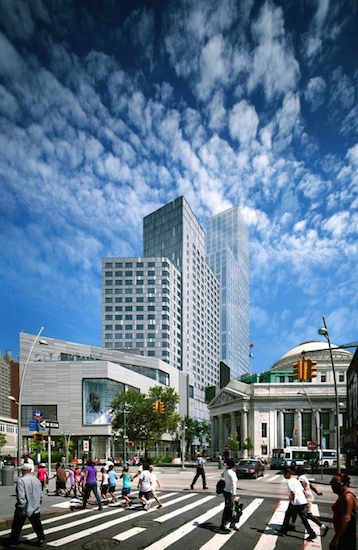Tale of Two Downtowns: Historic, commercial, branding for Brooklyn, Manhattan

When members of the Alliance for Downtown New York and the Downtown Brooklyn Partnership came together on Dec. 2 for a daylong summit called “Branding the New Downtown,” they brought with them both past success stories and enthusiastic visions of the future. Now linked for over a century by bridges and tunnels, the two vital downtown districts are the very essence of rebirth, in different ways.
The summit, which took place at Brooklyn’s attractive and spacious BRIC Arts Media House in the morning, and at the newly opened and ultramodern Lower Manhattan Headquarters in the afternoon, focused on an array of topics. But first and foremost among those topics was business. The center of attention seemed to fall squarely on how to attract more of it to these two downtown neighborhoods that have remained near the center of New York City life since the Dutch first clapped their eyes on this marshy island in 1624.
Tucker Reed, president of the Downtown Brooklyn Partnership, and Jessica Lappin, president of the Alliance for Downtown New York, presided over a panel of speakers, namely the owners of large and prosperous businesses. In doing so, they echoed a conversation that has been held by prominent New York capitalists, politicians and entrepreneurs hundreds of times for nearly 300 years. That conversation, and the story of Downtown Brooklyn and Downtown Manhattan, is a story of aggressive development and deliberate planning, based on great hopes for the future.

Brooklyn Boro
View MoreNew York City’s most populous borough, Brooklyn, is home to nearly 2.6 million residents. If Brooklyn were an independent city it would be the fourth largest city in the United States. While Brooklyn has become the epitome of ‘cool and hip’ in recent years, for those that were born here, raised families here and improved communities over the years, Brooklyn has never been ‘uncool’.